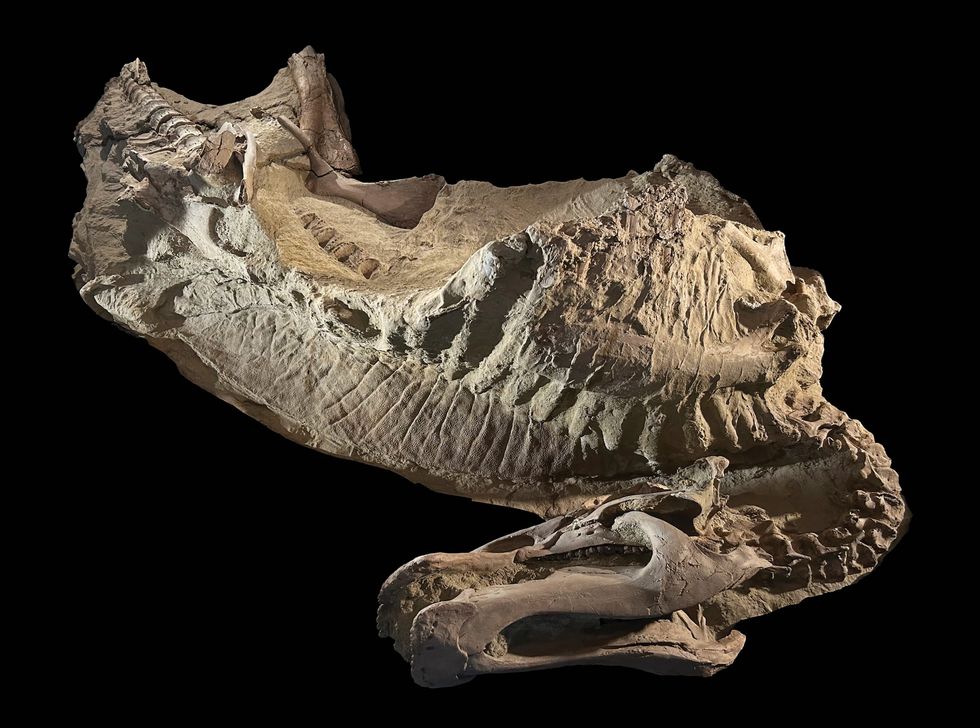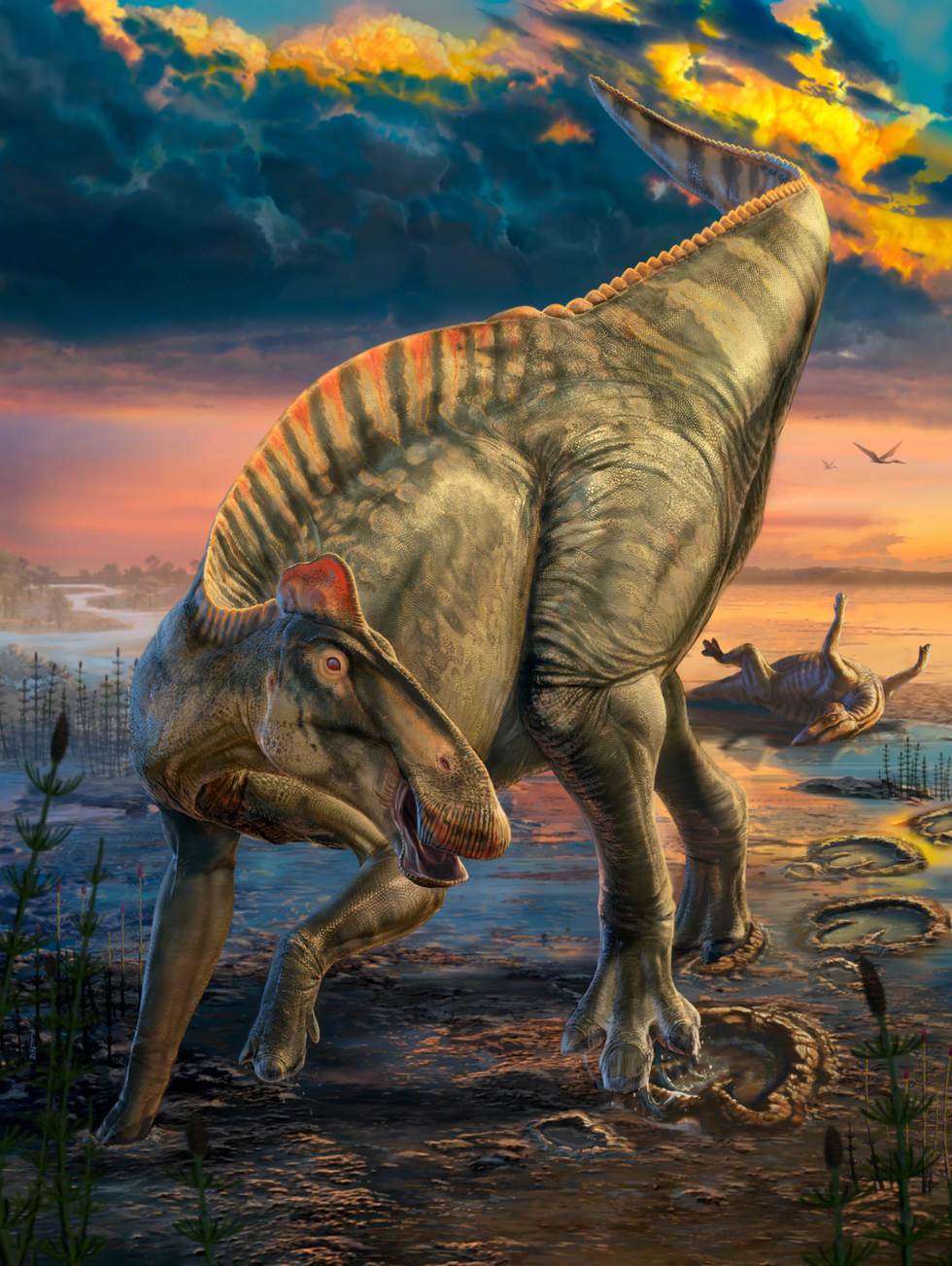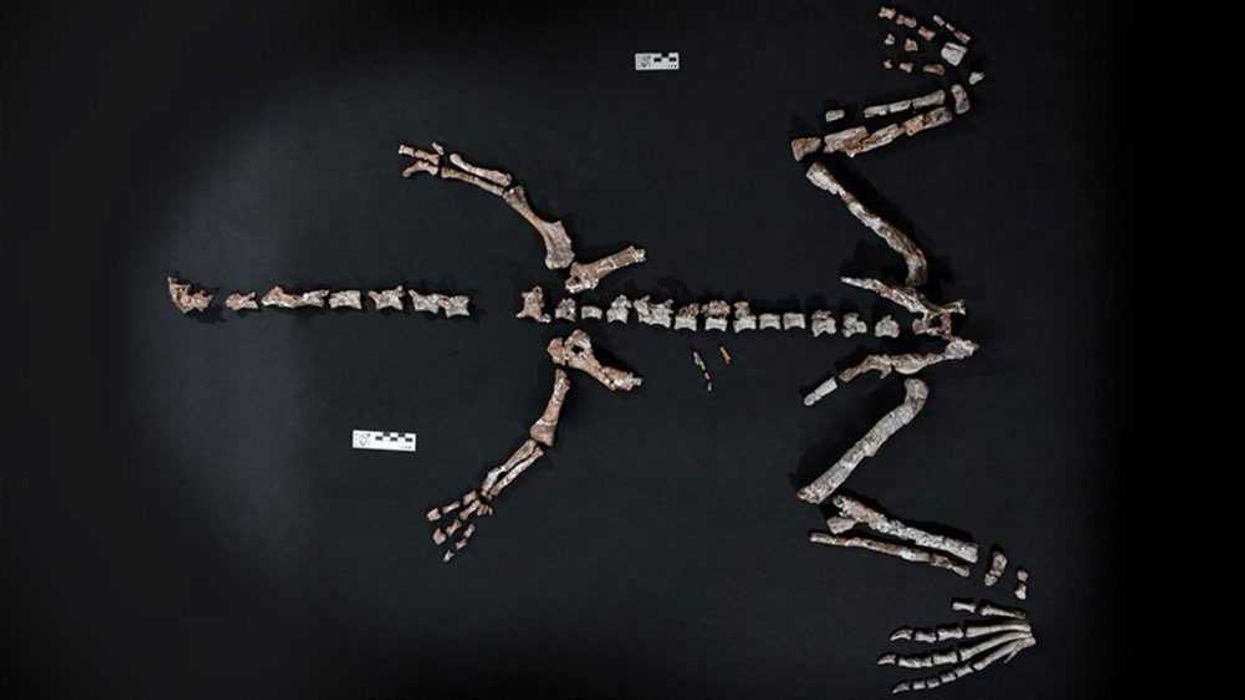Sinead Butler
Oct 25, 2025
Sensational discovery: Researchers uncover previously unknown dinosaur
Spot on News - News English / VideoElephant
Two dinosaur mummies have been discovered, but the way they have been preserved has fascinated researchers.
When we think of mummies, our minds tend to refer to the wrapped mummies of ancient Egypt, or there are natural human mummies which were inadvertently preserved by nature.
What does a dinosaur mummy look like?

Dinosaurs walked the Earth millions of years ago, and therefore their mummified remains are extremely old - so old that their fossilisation process has occurred on their skin and soft tissues.
This, combined with their bones, is used by scientists to understand and recreate what these creatures might have looked like.
Dinosaur mummies have been unearthed by experts over the past century.
In particular, a lot of these mummies have been located in eastern Wyoming, US, nicknamed the "mummy zone", and new remains have been found once again by scientists who returned to this region.
One of their finds included a mummy of a duck-billed dinosaur.
This is the first juvenile of a dinosaur that really is mummified,” said Paul Sereno, a University of Chicago palaeontologist involved in the discovery, told Associated Press.
Why are researchers intrigued by how dinosaurs have been preserved?
It is because there is no evidence of fossilised skin, but rather their skin and scales managed to leave an impression on the thin clay layer and microbes were able to harden this.
Scientists have seen this type of mummification before with other organisms, but didn't think it could occur on land, with Sereno noting how other mummies could also have been preserved through this means.
What would the dinosaurs have looked like?

To envision how the duck-billed dinosaurs looked when they were alive all those years ago, scientists were able use clay templates, and from this they believe the creatures had a spikey tail and hooves on their feet.
How can this help future research?
This initial research into dinosaur mummies could help experts find even more, especially now they know to look for skin and soft tissue impressions, not just bones alone, as noted by Mateusz Wosik, a Misericordia University palaeontologist who wasn't involved with the discovery.
As the mummy tally grows, it will offer additional insight into how these ancient creatures lived on Earth during this time period.
These new findings were published on Thursday in the journal Science.
How to join the indy100's free WhatsApp channel
Sign up to our free indy100 weekly newsletter
Have your say in our news democracy. Click the upvote icon at the top of the page to help raise this article through the indy100 rankings.
Top 100
The Conversation (0)














